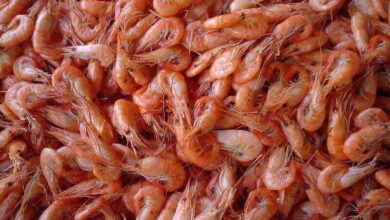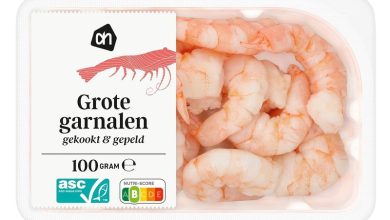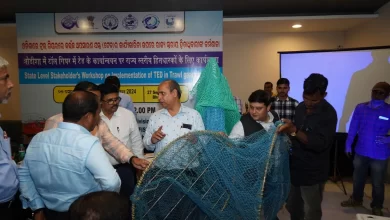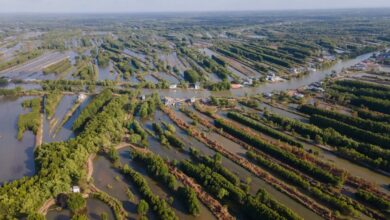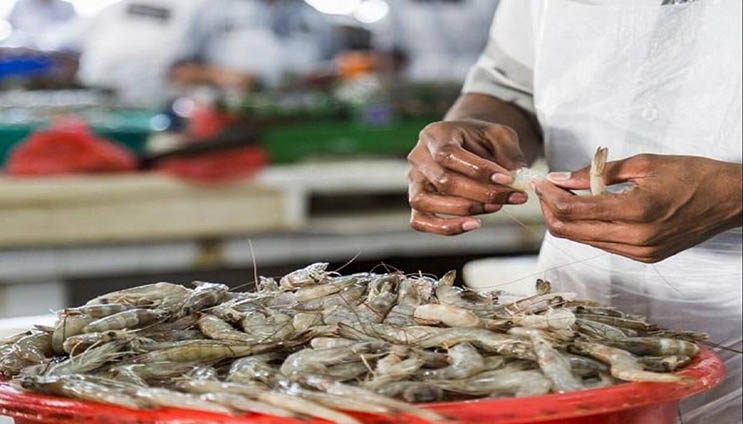
Despite various hurdles in its key seafood export markets, such as the United States, India set a new record in terms of both quantity and value (both in US dollars and rupees) by shipping 17,35,286 MT of seafood worth Rs. 63,969.14 crores (US$ 8.09 billion) during FY 2022-23.
India’s seafood business has grown to become one of the world’s primary providers of high-quality seafood to over 100 countries. Furthermore, during the fiscal year 2021-22, the industry set a new high for Seafood Exports.
In 2021-22, India shipped 13,69,264 MT of seafood worth US$ 7.76 billion (Rs 575.86 billion), an all-time high in terms of value, while shrimp production exceeded one million MT. Frozen shrimp remained the most important export item in terms of number and price, contributing to 53% of total income and 75% of total volume.
However, during FY 2022-23, exports increased by 26.73% in quantity, 11.08% in rupees, and 4.31% in US dollars.
As per a press release from the Ministry of Commerce and Industry, frozen shrimp stayed the most important exporting item on the basis of both volume and value, while the United States and China emerged as India’s top buyers.
Frozen shrimp, which generated Rs 43,135.58 crore (USD 5481.63 million), remained the most important item in the entirety of seafood exports, contributing to 40.98 percent of overall dollar profits and 67.72 percent of total volume. The export of shrimp climbed by 1.01 percent in rupees throughout the period.
Frozen fish, the second most valuable exported commodity, brought in Rs 5,503.18 crore (USD 687.05 million), making up 21.24 percent of all exports and 8.49 percent of total dollar revenues. This year, frozen fish exports climbed by 62.65%, 58.51%, and 45.733% in terms of quantity, rupees, and dollar value, respectively.
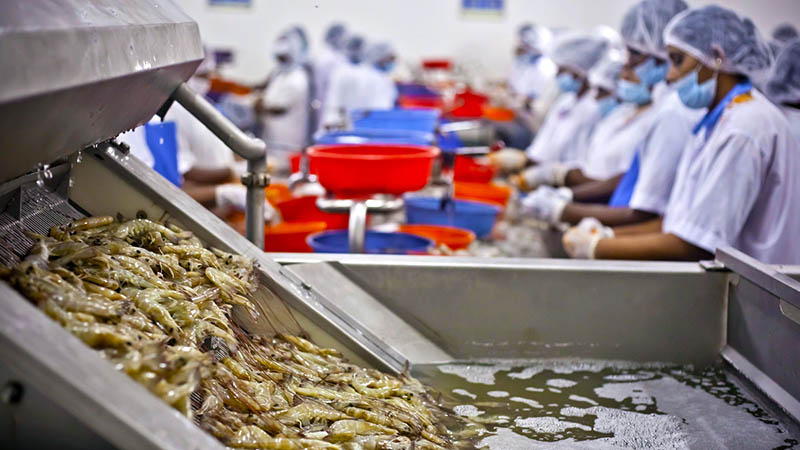
Photo: Choice Canning Company
Under Other commodities, the third highest export category at US$ 658.84 million included canned food worth Rs. 326.48 crore (US$ 41.56 million), frozen lobster worth Rs. 215.15 crore (US$ 27 million), and other products.
Frozen squid, the fourth most valuable export item, earned Rs 3593.75 crore (US$ 454.61 million), which represents 4.83 percent of total volume and 5.62 percent of total US dollar revenues. Frozen fish exports climbed by 28.07% in Rupee value and 18.58% in US dollar value.
The United States, China, and the European Union are major markets for Indian seafood. Southeast Asia is the world’s fourth largest market for India.
D.V. Swamy, chairman of the Marine Products Export Development Authority (MPEDA), expressed optimism about reaching new heights through a multifaceted strategy based on environmentally friendly fishing techniques, added value, elevated production from aquaculture through diversification, and aggressively entering new markets.
“Furthermore, the reduction in customs duty on substances used in the manufacture of aquatic feed, including fish lipid oil, fish meal, Krill meal, mineral premix, and vitamin premix, will assist in lowering production costs, offering an economic advantage to all interested parties in the fish farming industry,” Swamy said.
India has a coastline of over 8,118 kilometers, an EEZ of 2.02 million square kilometers, and a land area of 0.5 million square kilometers. The continental shelf is expected to hold 4.41 million tons of economic resources, of which around 3.40 million tons are currently exploited.
Furthermore, India possesses superior seafood processing plants that adhere to rigorous international rules and regulations, transforming India into the world’s third-largest fish producer, second-largest aquaculture producer, and fourth largest seafood producer.
Jaber Bin Abdul Bari
Department of Oceanography, NSTU

